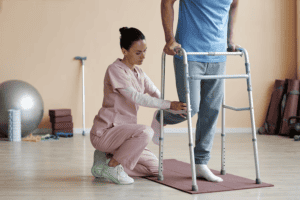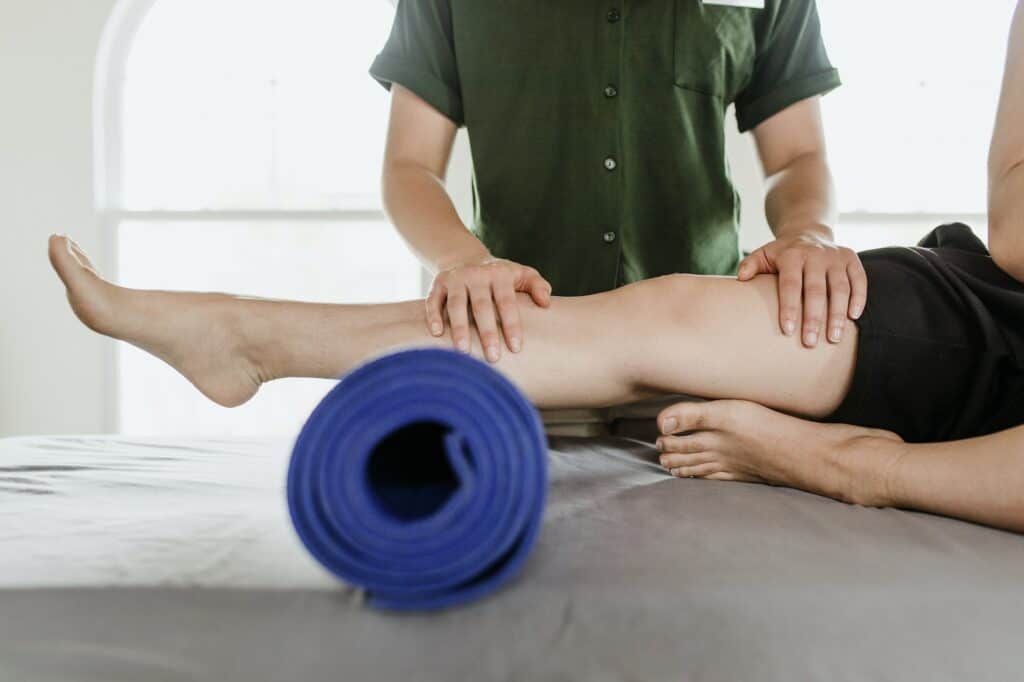Recovering from surgery can be challenging, but physical therapy plays a crucial role in getting you back on your feet. Post-surgery rehabilitation often includes a tailored mix of exercises, stretching, and strength training designed to restore mobility, reduce pain, and rebuild muscle. Techniques like manual therapy, massage, and sometimes electrical stimulation can further accelerate healing. A key strategy is gradual progression, ensuring you don’t push too hard too soon. With the right plan and consistent effort, physical therapy helps guide you toward a safe and effective recovery.
Importance of Early Mobilization

Getting moving soon after surgery is vital for a faster recovery. Physical therapists focus on light exercises and stretches to prevent stiffness and muscle atrophy. Early mobilization also promotes blood circulation, reducing the risk of blood clots and other complications. Simple movements, such as walking or gentle range-of-motion exercises, help regain mobility while minimizing post-surgical discomfort. Starting early prevents delays in recovery and builds the foundation for more intensive rehabilitation. This strategy supports a gradual return to normal activities while avoiding setbacks from inactivity.
Importance of Early Movement
Getting moving soon after surgery plays a crucial role in speeding up recovery. Physical therapists often recommend light exercises and gentle stretches to keep muscles engaged and joints flexible, helping to prevent stiffness and muscle atrophy. Early movement also promotes healthy blood circulation, which is essential for reducing the risk of blood clots and supporting healing. Simple activities like walking or performing gentle range-of-motion exercises can help ease post-surgical discomfort while gradually restoring mobility in a safe and controlled manner.
Preventing Complications
Early mobilization is key to minimizing post-surgical complications. Moving the body helps promote circulation, which can reduce the risk of developing dangerous conditions like blood clots or deep vein thrombosis. Additionally, regular movement boosts the immune system and helps fight off infections that can occur if the body remains too stationary. Physical therapists carefully guide patients through exercises that are safe and effective in preventing these complications while also supporting the body’s natural healing processes.
Building a Strong Foundation
Starting rehabilitation early after surgery sets the stage for more intensive therapy later on. Light activities, such as walking and gentle stretching, help lay the groundwork for future strength-building and flexibility exercises. By preventing stiffness and muscle loss from inactivity, early mobilization makes it easier for patients to progress to more challenging rehabilitation tasks. This strong foundation ensures that recovery is smoother and faster, reducing the likelihood of setbacks or delays in regaining full functionality.
Encouraging Gradual Progress
Physical therapy focuses on gradual progression, and early movement is essential for this approach. By starting with light, manageable exercises, patients can slowly build up their strength and stamina without risking injury or overexertion. This gradual approach helps maintain steady recovery, allowing the body to heal properly without unnecessary strain. Over time, therapists can introduce more advanced exercises as the patient’s condition improves, ensuring each step forward is safe and effective.
Supporting Long-Term Recovery
Early mobilization is not only about short-term benefits; it plays a crucial role in long-term recovery as well. By getting the body moving early, patients are better prepared to regain strength, flexibility, and endurance. This early focus on movement helps prevent long-term issues like joint stiffness, muscle weakness, or chronic pain. As patients continue to progress through their rehabilitation program, the early groundwork laid through movement makes the transition to normal activities smoother and more sustainable in the long run.
Personalized Rehabilitation Programs
Every surgery is different, so your rehabilitation should be too. Physical therapists develop personalized plans that align with the type of surgery, your physical condition, and personal goals. These custom programs focus on exercises that target specific areas of weakness or stiffness, ensuring progress without overexertion. Personalized care means the therapist adapts exercises based on your recovery speed, pain tolerance, and any complications. This individualized approach accelerates healing by addressing your unique needs and challenges, promoting a smoother recovery process.
Strength and Flexibility Training
Regaining strength and flexibility after surgery is a cornerstone of rehabilitation. Physical therapy often includes targeted strength training exercises to rebuild weakened muscles while promoting flexibility to prevent stiffness. Strength training helps improve joint stability, which is crucial for resuming normal activities without pain or injury. Flexibility exercises, like stretching, prevent scar tissue buildup and encourage full range-of-motion recovery. Balancing these two elements ensures you regain both function and movement, reducing the risk of reinjury as you get stronger over time.
Pain Management Techniques
Pain is a common hurdle in post-surgery recovery, but physical therapists use a variety of techniques to manage it effectively. Beyond medication, methods like heat and ice therapy, ultrasound, or electrical stimulation can help reduce inflammation and ease discomfort. Manual therapy and massage may also be employed to relieve tension in sore muscles or stiff joints. By addressing pain early, these strategies make it easier for you to participate fully in your rehabilitation exercises, which is key to a faster and more comfortable recovery process.
Gradual Progression and Monitoring
A slow, steady approach is critical in post-surgery physical therapy to prevent complications like re-injury. Therapists gradually increase the intensity and difficulty of exercises based on your progress and pain levels. Monitoring your recovery closely allows therapists to adjust the plan in real time, ensuring you’re not pushed too hard but still challenged enough to make progress. This careful balance prevents over-exertion while building strength and flexibility. Regular assessments guide this strategy, keeping recovery on track and reducing the risk of setbacks.
Improving Balance and Coordination
After surgery, especially orthopedic or joint procedures, balance and coordination can be significantly affected. Physical therapists focus on exercises that restore these essential skills, which are crucial for everyday activities like walking, climbing stairs, and even standing. Simple activities like balancing on one leg or using a balance board help retrain your body’s proprioception, or awareness of movement and position. Improving balance not only prevents falls during recovery but also builds confidence as you regain control over your movements, helping you return to normal life safely.
The Role of Manual Therapy
Manual therapy, a hands-on technique used by physical therapists, can be highly beneficial in post-surgical rehabilitation. This practice involves joint manipulation, soft tissue mobilization, and stretching to reduce stiffness, improve range of motion, and alleviate pain. For surgeries involving joints or muscles, manual therapy helps break down scar tissue, improve blood flow, and restore proper movement patterns. Incorporating these methods accelerates healing by addressing physical limitations directly, making it easier to perform necessary rehabilitation exercises as your body recovers.
Building Endurance Over Time
Post-surgery rehab isn’t just about regaining movement; it’s also about building endurance to resume normal activities. After surgery, even simple tasks can be tiring. Physical therapy gradually reintroduces exercises to improve cardiovascular endurance and overall stamina. These exercises might include low-impact activities like stationary biking or swimming, which are gentle on healing tissues while boosting energy levels. As your endurance grows, everyday tasks become easier, and you’re better prepared to return to your pre-surgery activity level, whether that’s work, hobbies, or sports.
Conclusion
Post-surgery rehabilitation plays a crucial role in restoring mobility, reducing pain, and enhancing overall recovery. At ActiveMed Integrative Health Center, we use tailored physical therapy strategies designed to meet the unique needs of each patient, ensuring a smoother and faster recovery process. Whether you’re recovering from joint replacement, spinal surgery, or any other procedure, our team is here to help you regain your strength and mobility.
If you’re in the Poway, CA area and looking for expert care, contact us at ActiveMed Integrative Health Center today! Call us at +1 (858) 673-4400 to schedule an appointment. We’re here to support you on your path to recovery!




